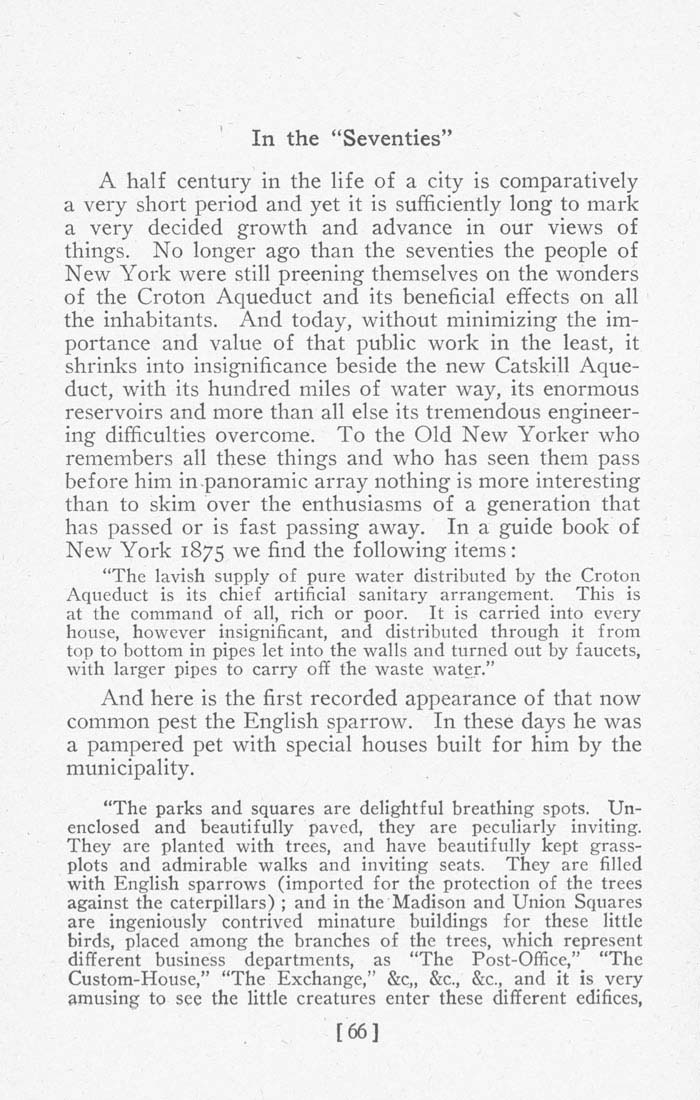In the "Seventies"
A half century in the life of a city is comparatively
a very short period and yet it is sufficiently long to mark
a very decided growth and advance in our views of
things. No longer ago than the seventies the people of
New York were still preening themselves on the wonders
of the Croton Aqueduct and its beneficial effects on all
the inhabitants. And today, without minimizing the im¬
portance and value of that public work in the least, it
shrinks into insignificance beside the new Catskill Aque¬
duct, with its hundred miles of water way, its enormous
reservoirs and more than all else its tremendous engineer¬
ing difficulties overcome. To the Old New Yorker who
remembers all these things and who has seen them pass
before him in panoramic array nothing is more interesting
than to skim over the enthusiasms of a generation that
has passed or is fast passing away. In a guide book of
New York 1875 we find the following items:
'The lavish supply of pure water distributed by the Croton
Aqueduct is its chief artificial sanitary arrangement. This is
at the command of all, rich or poor. It is carried into every
house, however insignificant, and distributed through it from
top to bottom in pipes let into the walls and turned out by faucets,
with larger pipes to carry off the waste water."
And here is the first recorded appearance of that now
common pest the English sparrow. In these days he was
a pampered pet with special houses built for him by the
municipality.
"The parks and squares are delightful breathing spots. Un¬
enclosed and beautifully paved, they are peculiarly inviting.
They are planted with trees, and have beautifully kept grass-
plots and admirable walks and inviting seats. They are filled
with English sparrows (imported for the protection of the trees
against the caterpillars) ; and in the Madison and Union Squares
are ingeniously contrived minature buildings for these little
birds, placed among the branches of the trees, which represent
different business departments, as "The Post-Office," "The
Custom-House," "The Exchange," &c„ &c., &c., and it is very
amusing to see the little creatures enter these different edifices,
[66]
|








